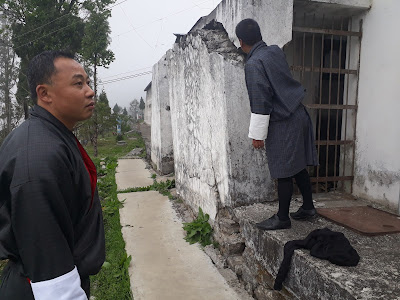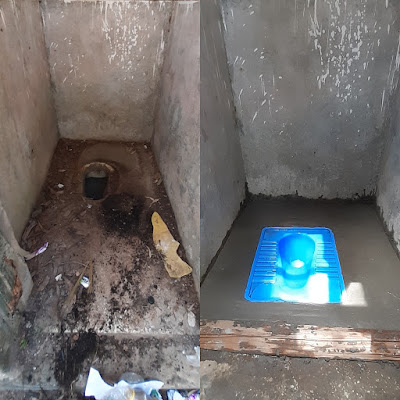The most satisfying among the projects carried out by Bhutan Toilet Org is the School Toilet Upgradation project. We have been able to train hundreds of school staff to help us transform hundreds of toilet overnight. The combination of smart process and amazing SATO technology made the project one of the most cost-efficient projects.
We have crossed over a thousand toilets in just over eight Dzongkhags making a saving of at least Nu. 13 million for the government. Of course, these many toilets wouldn't have been upgraded if it wasn't for the project that offered get rid of the old toilets and upgrade them to the next generation toilets using SATO pan.
 |
| Punakha |
Within the project, another surprise emerged when we learned that some of the really old toilet structures that were waiting to be dismantled got a second lease of life. While working on some 16 units of pit latrine in a school in Thimphu as part of the pilot project, I noticed an old but strong 10 -unit toilet structure that was closed and left unused. Upon inquiry, the school told me that the toilet was closed for decades and they were only waiting for a budget to demolish it and construct a new one.
Honestly, school toilets are hard to come by. There are a hundred other important things to build in school that toilets are the last things to get attention. That's why you will see that it takes tenures of several principals to finally get a new toilet constructed in a school. And when you hear someone say that they are waiting for a budget to build or renovate a toilet, you know they are being a buffalo waiting for the yak.
I requested the principal to open the old toilet, which was shut so brutally with hundreds of random nails. Once open, I could see it was a pit latrine with cemented floor and the only problem seems to be the pit which was filled with thousand random things. If we could empty the pit then we could install SATO pan over the pit. The school took the challenge to empty the pit by filling it with water and sucking it out using sewer suction truck. When I visited the next time the pit was emptied and ready to be upgraded. It took was a few hours to install SATO pan on each of the ten units and within the next few days, it was ready to serve its second term.
Calculating the cost, we found out that we managed to save the old toilet in less than Nu.50,000. If the school had to rebuild a 10-units toilet it could cost at least Nu.1.5 million. Therefore, to be able to save Nu. 1.4 million within a few hours was a significant achievement, but the priceless part of this was reviving and adding 10 more units of toilets for the students to use in a few days.
 |
| Chhukha |
The same magic was done to a toilet each in Samtse and Saprang, two blocks each in Chhukha, Zhemgang, Haa, Wangdue and Punakha. To Punakha and Sarpang, Education Secretary, Karma Tshering, then the DG, specifically ask us to go there and save the old toilets that he had instructed the school not to touch until we came to upgrade.
Since then, we have requested the Education Ministry to disallow school to demolish any old school toilets and it's been circulated thus across the country.
This story of saving old school toilets inexpensively has been shared on various platforms to encourage similar initiatives across the globe. This could not just save millions in the cost of constructions, but also ensure an instant solution to toilet shortage issues and also the quality of toilets in schools.








